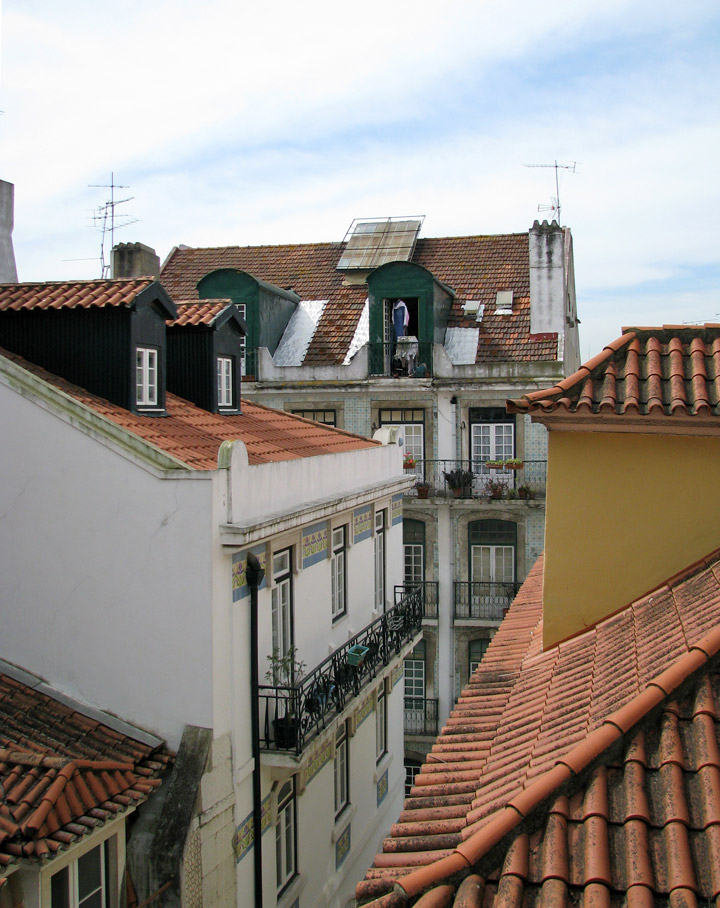

Sé de Lisboa
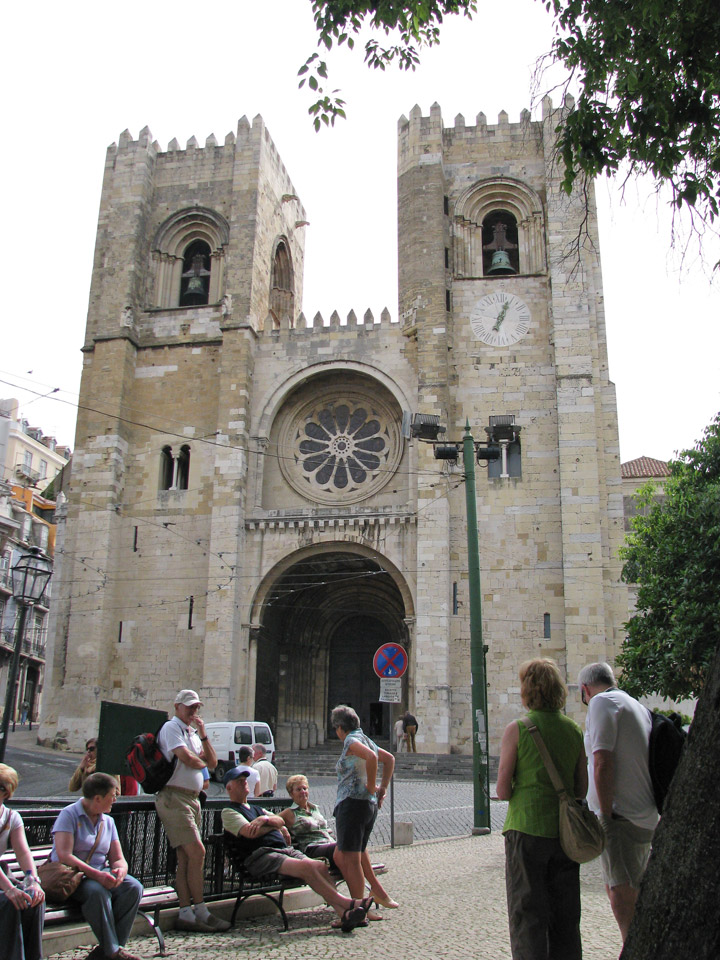
Lisbon Cathedral
Santa Maria Maior de Lisboa or Sé de Lisboa is the cathedral of Lisbon and the oldest church in the city. Since the beginning of the construction of the cathedral, in the year 1147, the building has been modified several times and survived many earthquakes. It is nowadays a mix of different architectural styles.
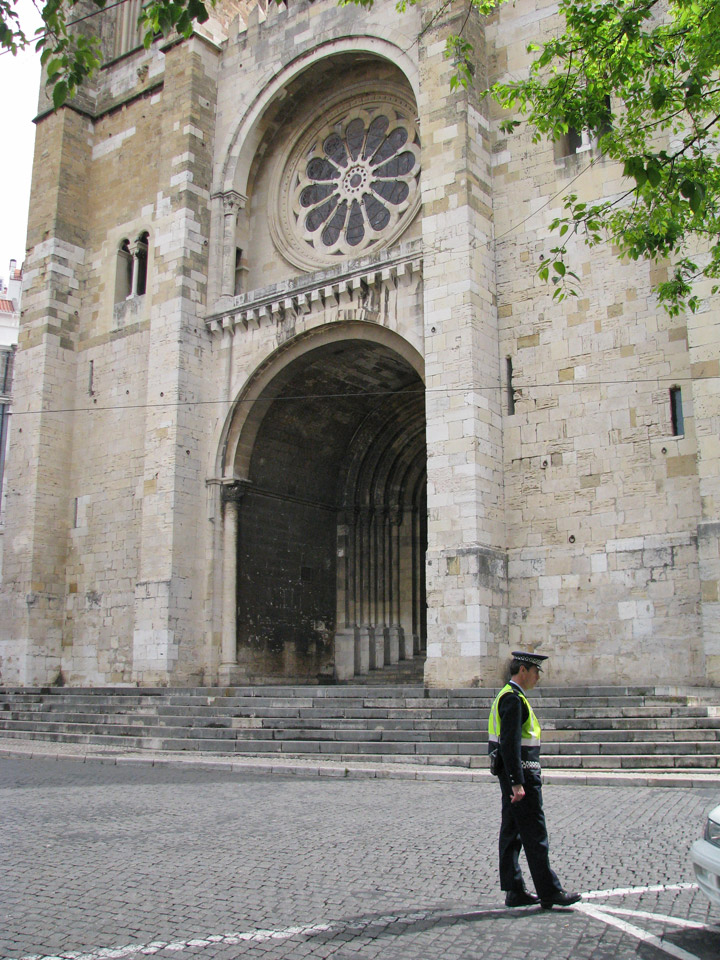
Lisbon is the seat of a bishopric since the 4th century AD. After the period of Visigothic domination the city was conquered by the
Moors and stayed under Arab control from the 8th to the 12th century, although
Christians were allowed to live in Lisbon and its surroundings. In the year
1147, the city was reconquered by an army composed of Portuguese soldiers led by
King Afonso Henriques and North European crusaders taking part on the Second
Crusade. An English crusader named Gilbert of Hastings was
placed as bishop, and a new cathedral was built on the site of the main mosque
of Lisbon.
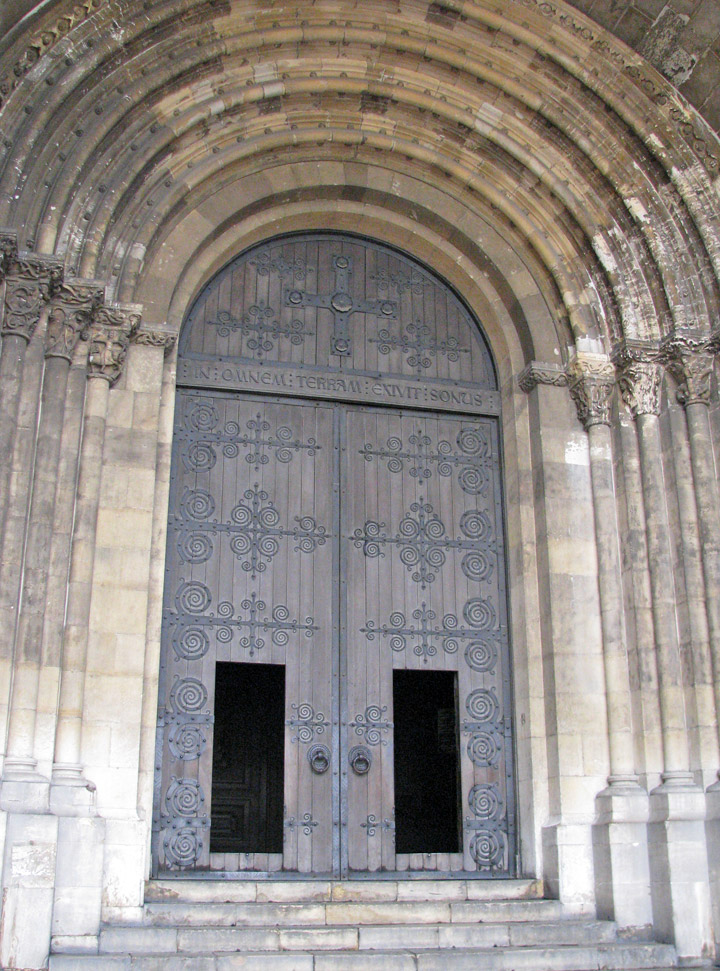
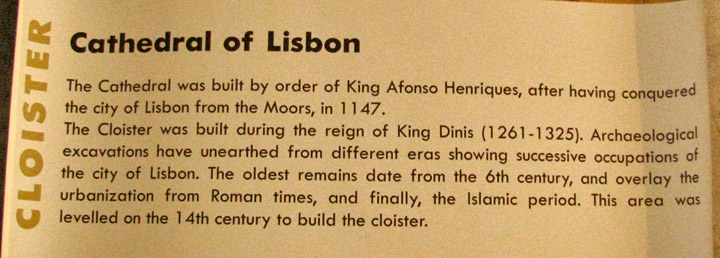
This first building was completed between 1147 and the first
decades of the 13th century in Late Romanesque style. At that time the relics of
St Vincent (Vincent of Saragossa, patron saint of Lisbon) were brought to the
cathedral from Southern Portugal. In the end of the 13th century King Dinis of
Portugal built a Gothic cloister, and his successor Afonso IV of Portugal had
the main chapel converted into a royal pantheon in Gothic style for him and his
family. In 1498, Queen Leonor founded the Misericórdia of Lisbon in one of the
chapels of the cloister of the cathedral. The Misericórdia (Mercy) is a Catholic
charitable institution that later spread to other cities and had a very
important role in Portugal and its colonies.
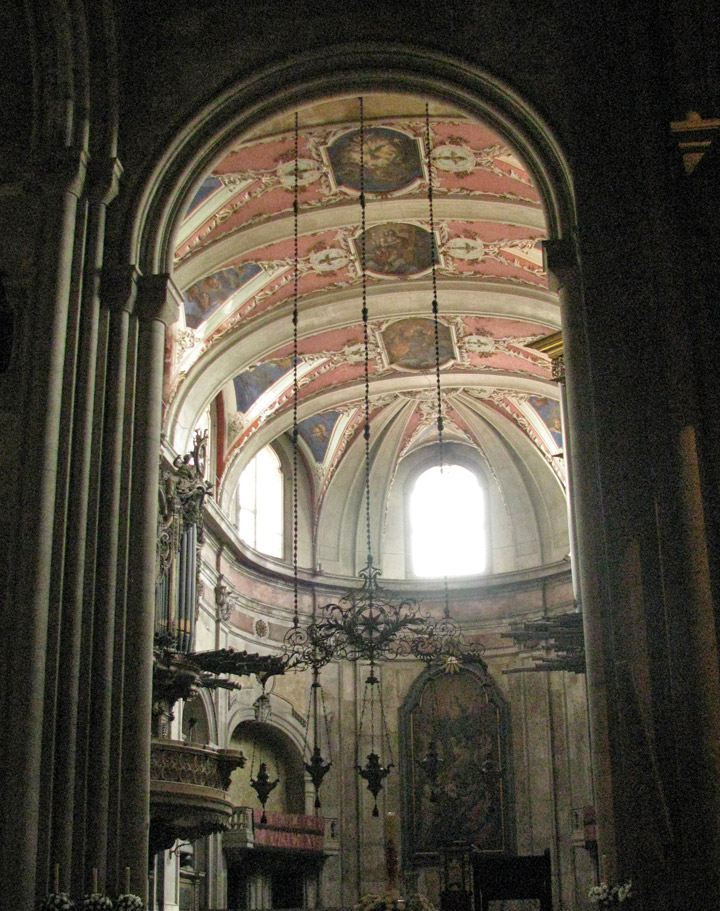
Gothic vault of the ambulatory and upper row of windows
Earthquakes have always been a problem for Lisbon and its cathedral. During the 14th and 16th centuries there were several of them, but the worst of all was the 1755 Lisbon earthquake, which destroyed the Gothic main chapel along with the royal pantheon. The cloisters and many chapels were also ruined by the quake and the fire that followed. The cathedral was partially rebuilt and, in the beginning of the 20th century, was given the appearance that it has today after a profound renovation. In recent years the central courtyard of the cloister has been excavated and shows signs of the Roman, Arab and mediaeval periods.
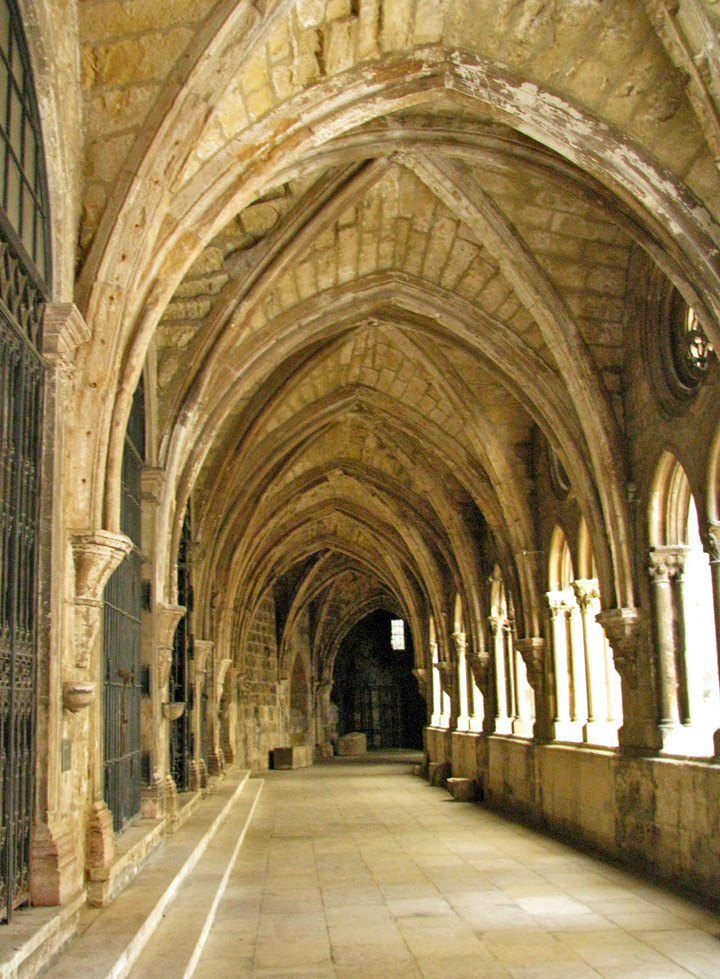
cloister
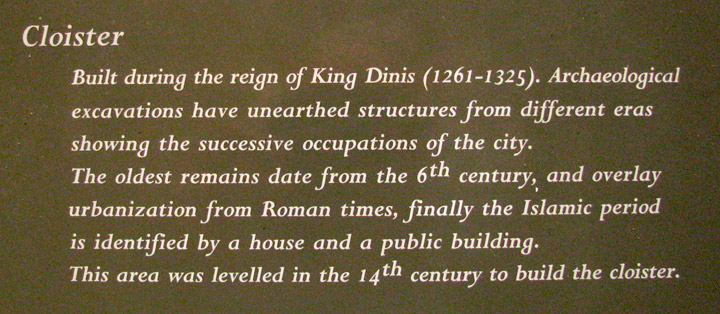
Photos of the Roman, Arab and mediaeval periods

Lisbon cathedral is a Latin cross building with three aisles, a
transept and a main chapel surrounded by an ambulatory. The church is connected
with a cloister on the Eastern side. The main façade of the cathedral looks like
a fortress, with two towers flanking the entrance and crenellations over the
walls. This menacing appearance, also seen in other Portuguese cathedrals of the
time, is a relic from the Reconquista period, when the cathedral could be used
as a base to attack the enemy during a siege.
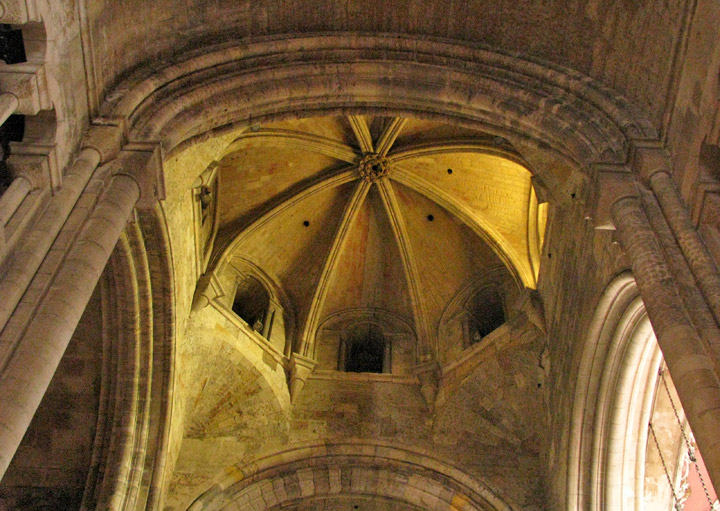
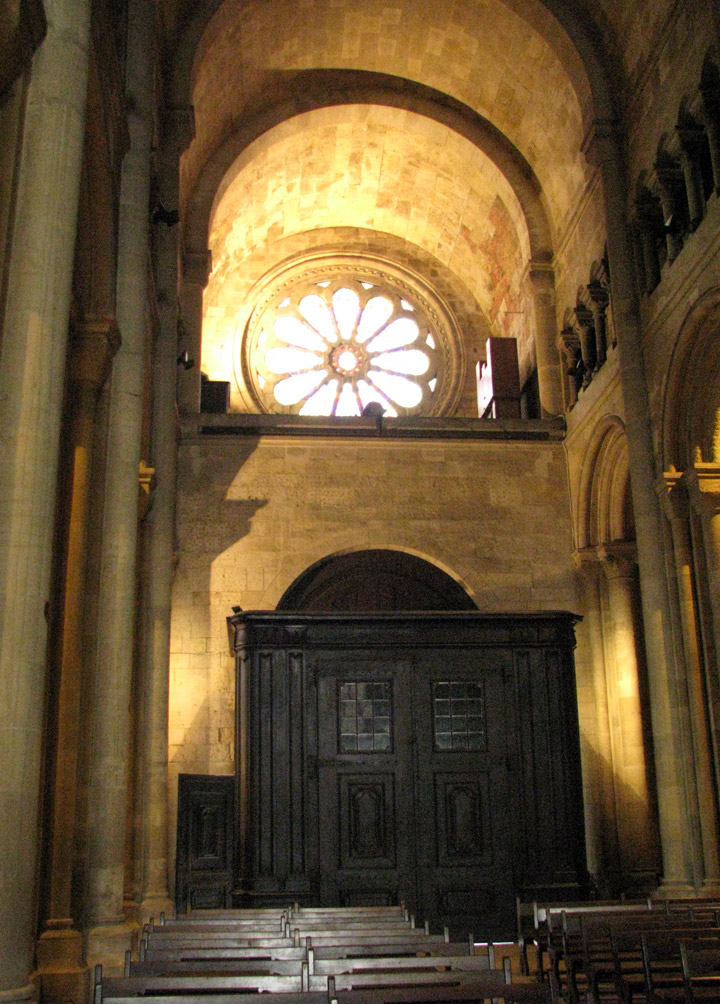
From its first building period (1147 until the first decades of the 13th
century), Lisbon cathedral has preserved the West façade with a rose window
(rebuilt from fragments in the 20th century), the main portal, the North lateral
portal and the nave of the cathedral. The portals have interesting sculptured
capitals with Romanesque motifs. The nave is covered by barrel vaulting and has
an upper, arched gallery (triforium).
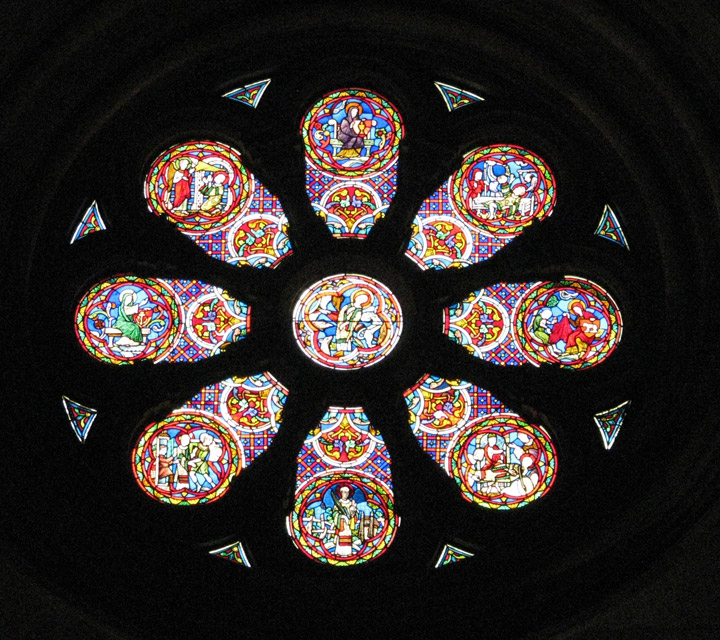
rose window
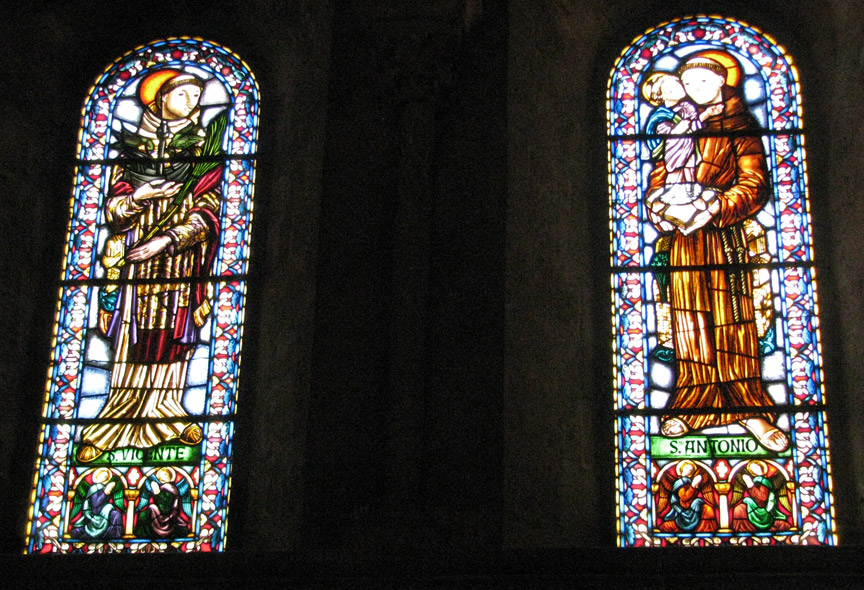
Light gets in through the rose windows of the West façade and transept, the narrow windows of the lateral aisles of the nave as well as the windows of the lantern tower of the transept. The general plan of the cathedral is very similar to that of the Old Cathedral of Coimbra, which dates from the same period. One of the chapels of the ambulatory has an interesting Romanesque iron gate.
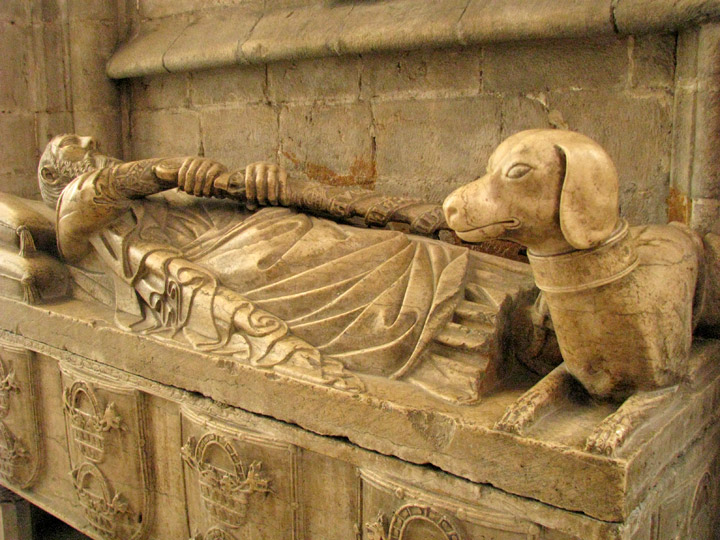
Gothic tomb of knight Lopo Pacheco in the ambulatory of Lisbon Cathedral
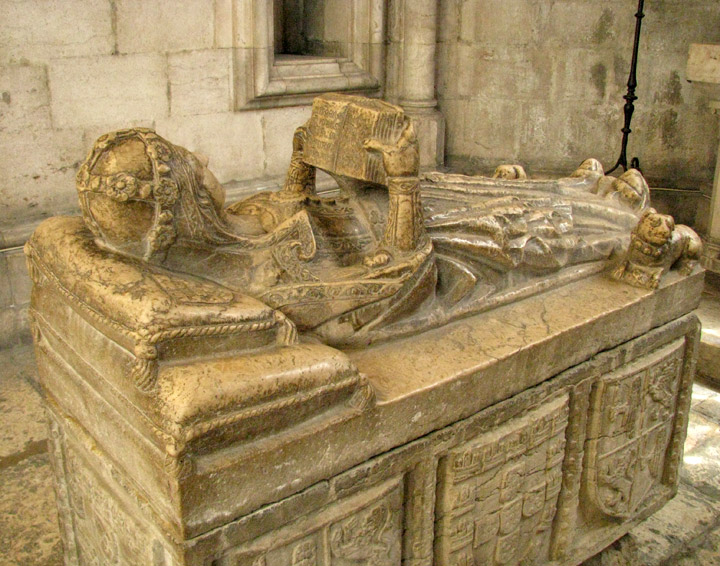
His wife, Maria Vilalobos
King Dinis of Portugal ordered the construction of a cloister in Gothic style in the end of the 13th century, which was severely damaged by the 1755 earthquake. Near the entrance of the cathedral, a rich merchant, Bartolomeu Joanes, built a funerary chapel for himself in the beginning of the 14th century. His tomb with his laying figure is still inside. Somewhat later, King Afonso IV of Portugal had the Romanesque apse replaced by a Gothic main chapel surrounded by an ambulatory with radiating chapels. The king and his family were buried in the main chapel, but their tombs and the chapel itself were destroyed in the 1755 earthquake. The ambulatory has survived and is an important work in the history of Portuguese Gothic. It consists of a circular aisle - not connected to the main chapel - with a series of radiating chapels. The second storey of the ambulatory is covered by ribbed vaulting and has a series of windows (clerestory) that bathe the interior with abundant light.
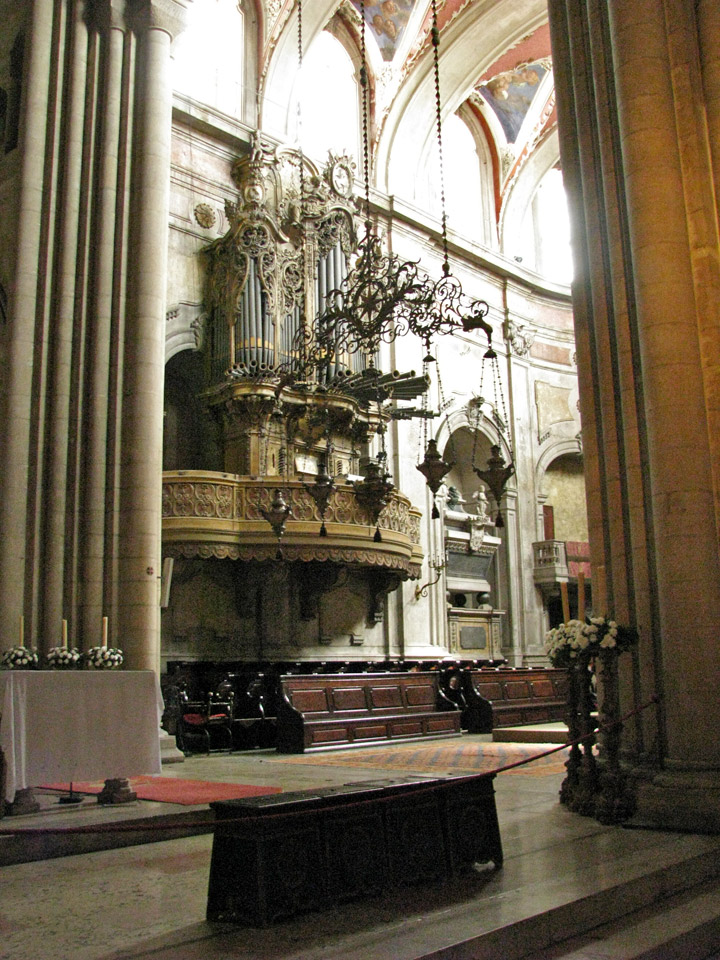
the organ
The ambulatory contains three outstanding Gothic tombs from the mid-14th century. One tomb belongs to Lopo Fernandes Pacheco, a nobleman at the service of King Afonso IV. His laying figure appears holding his sword and is guarded by a dog. His wife, Maria Vilalobos, appears over her tomb reading a Book of Hours. The third tomb belongs to an unidentified royal princess. All tombs are decorated with coats-of-arms.
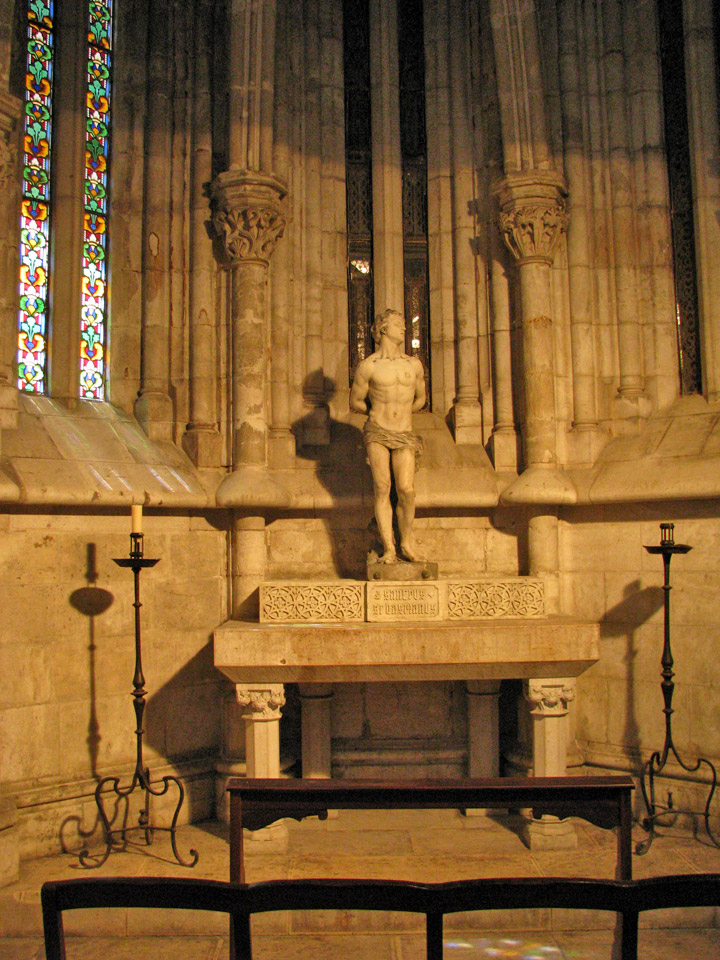
In the last quarter of the 15th century it is believed that the famous Saint
Vincent Panels, painted by Nuno Gonçalves, were placed in the St Vincent chapel
of the ambulatory. The panels are now in the Museu Nacional de Arte Antiga
(National Museum of Ancient Art) in Lisbon.
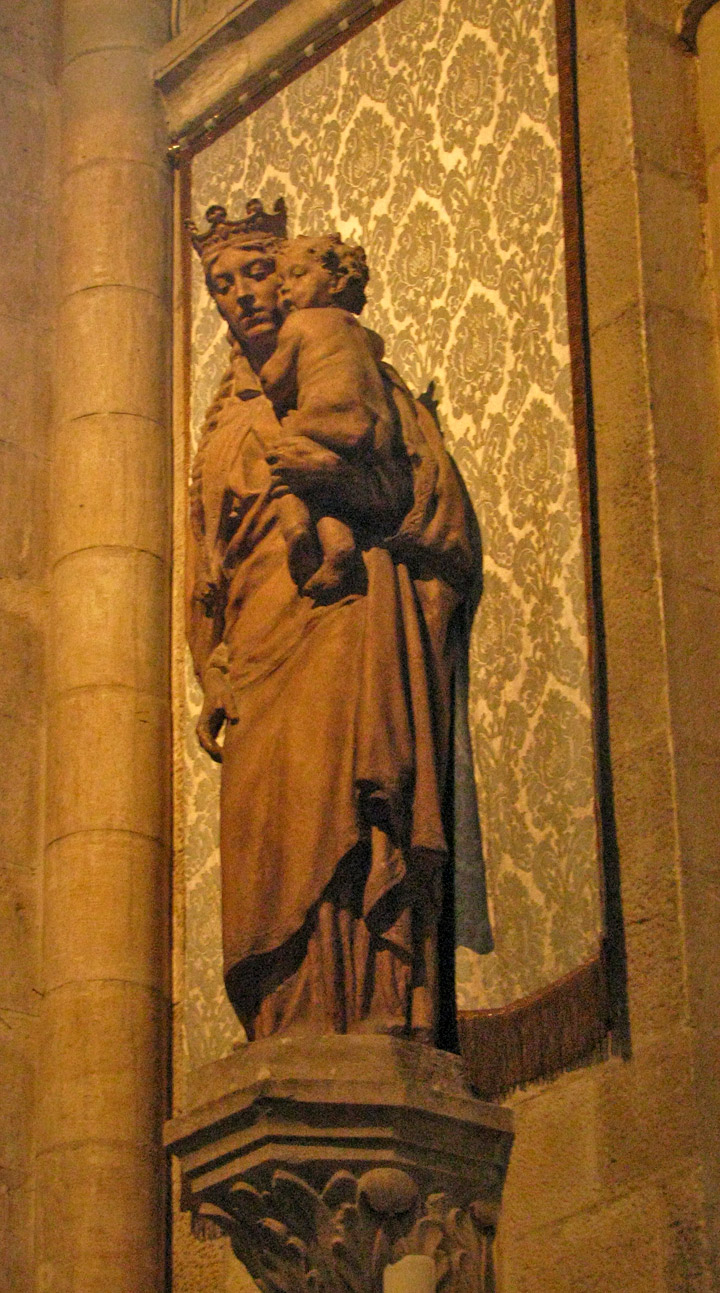
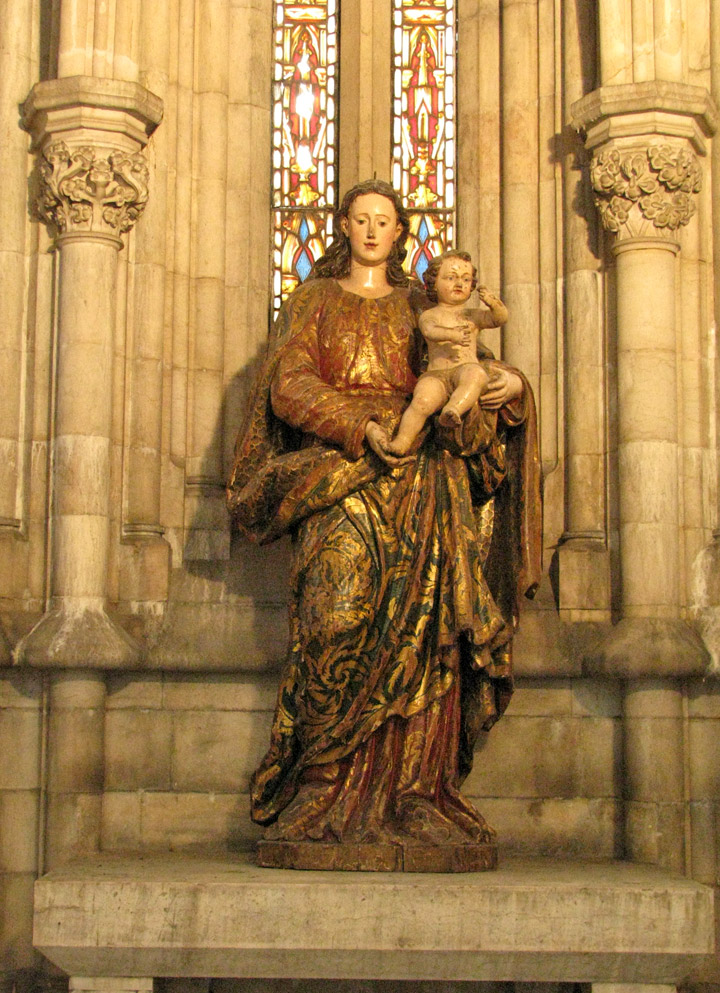
During the 17th century a fine sacristy was built in baroque style and, after
1755, the main chapel was rebuilt in neoclassical and Rococo styles (including
the tombs of King Afonso IV and his family). Machado de Castro, Portugal's
foremost sculptor in the late 18th century, is the author of a magnificent crib
in the Gothic chapel of Bartomoleu Joanes. In the beginning of the 20th century,
much of the neoclassical decoration from outside and inside of the cathedral was
removed to give the cathedral a more "mediaeval" appearance.
Text from Wikipedia
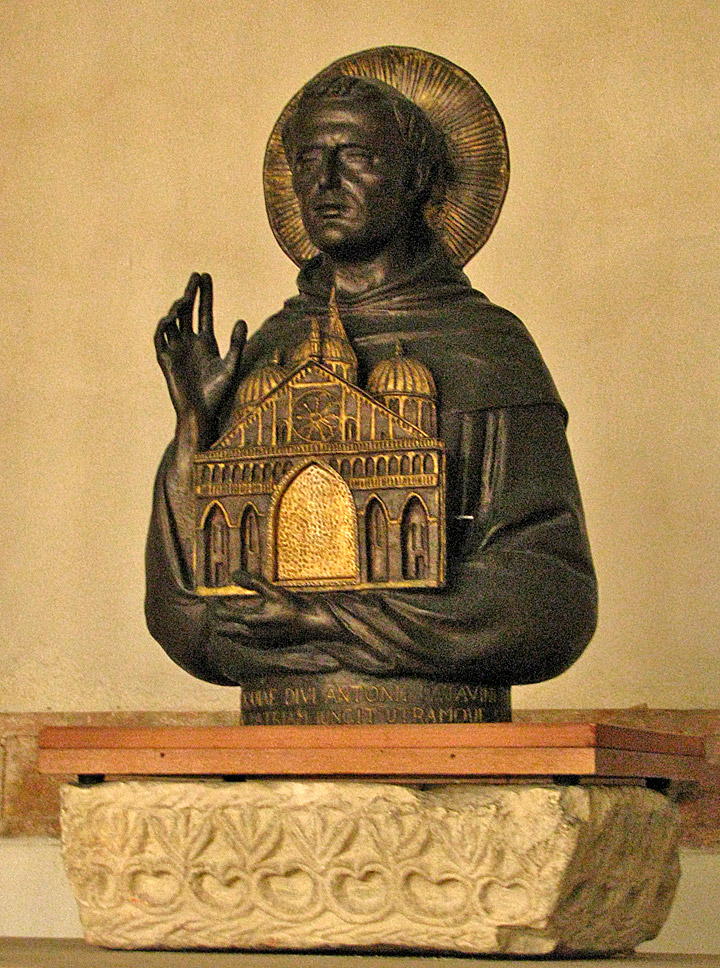
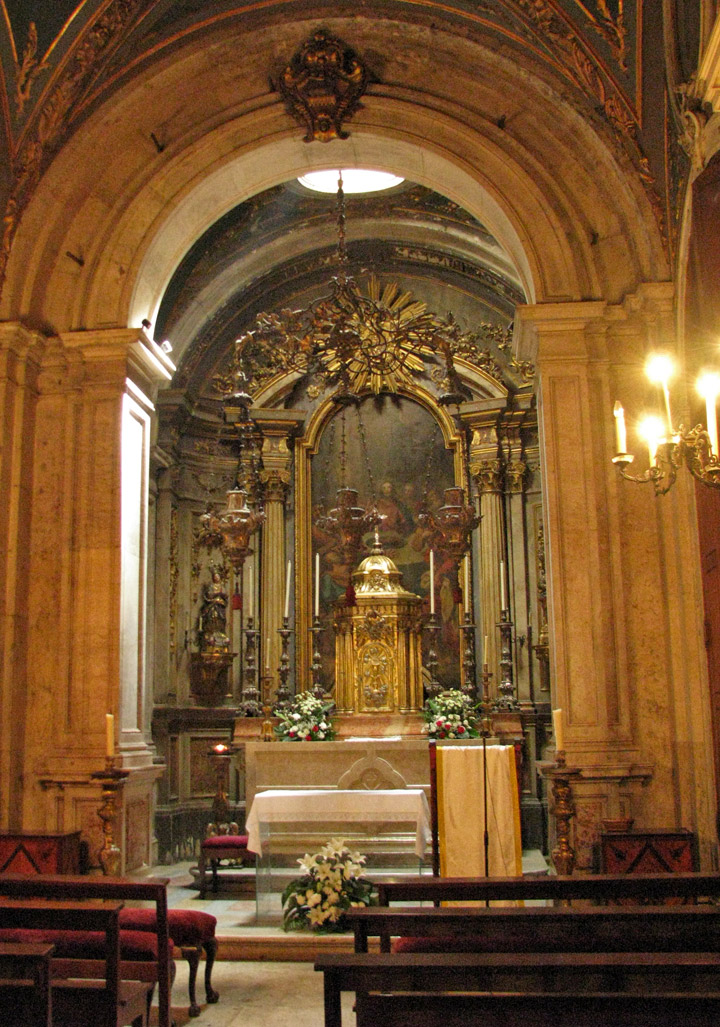
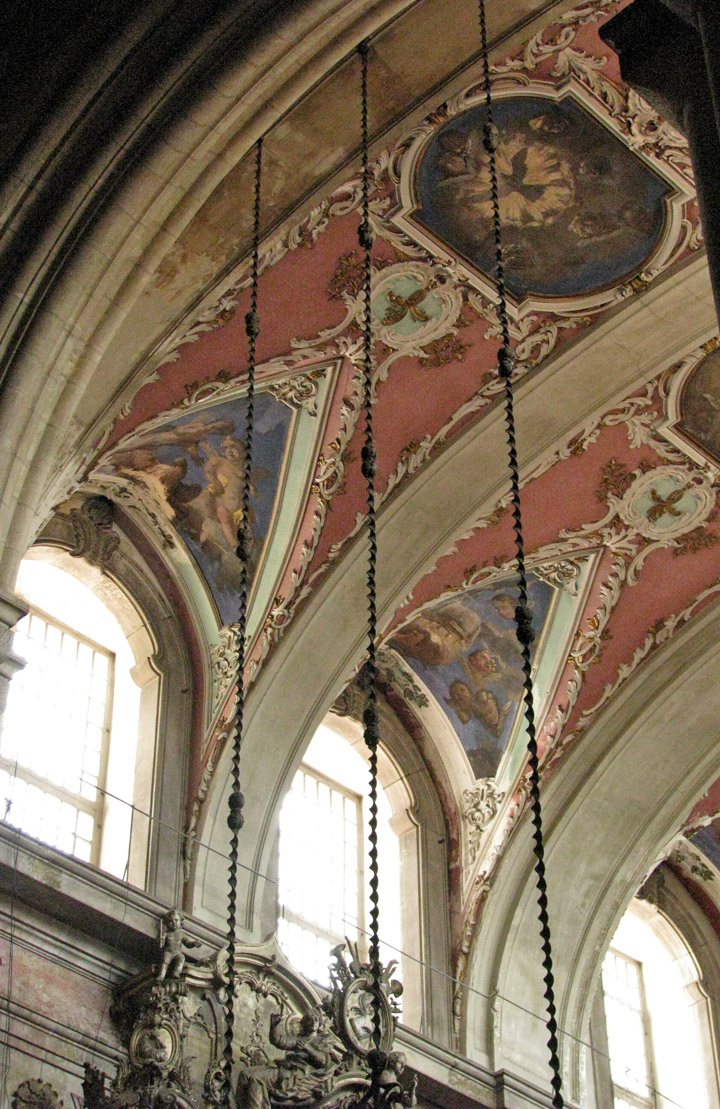
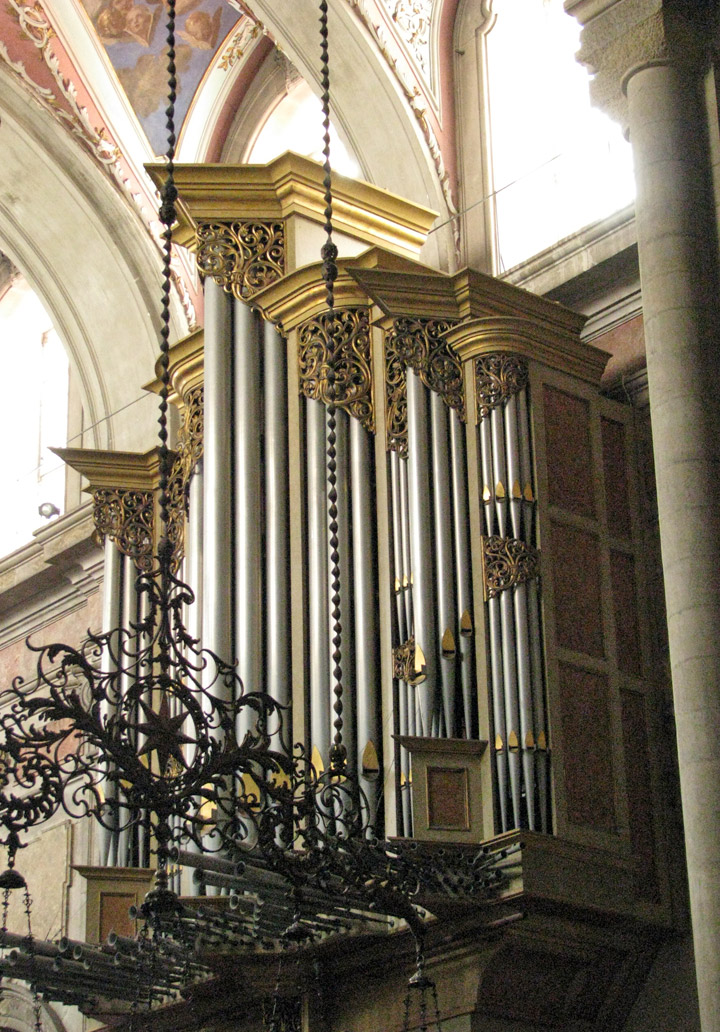
organ
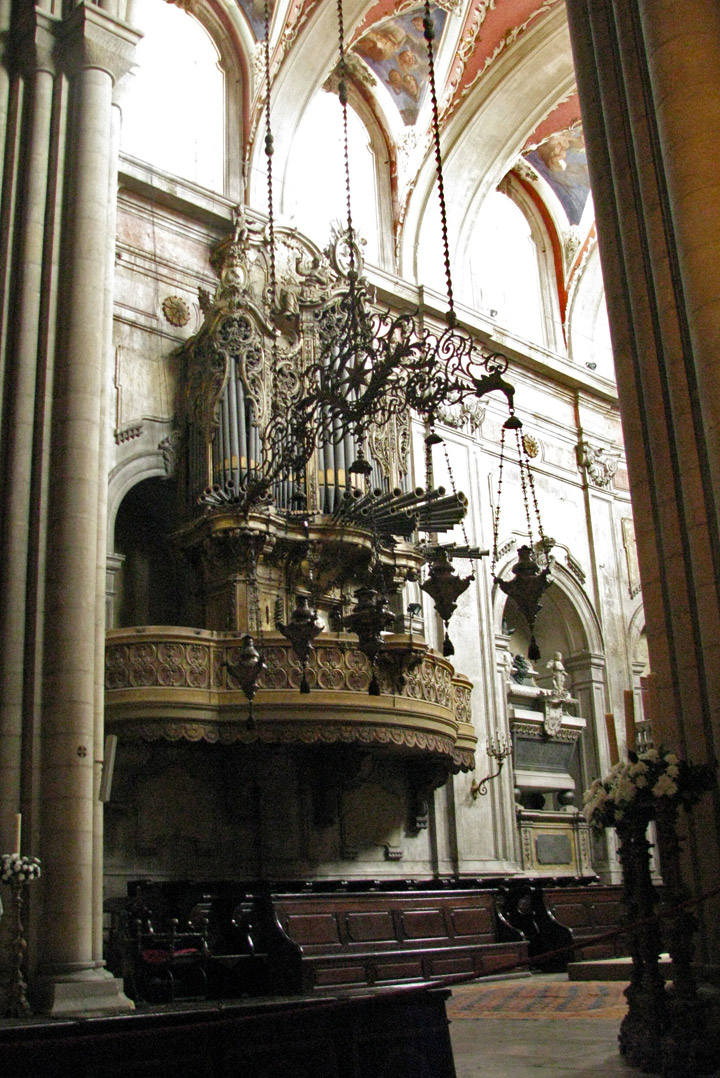

Nativity
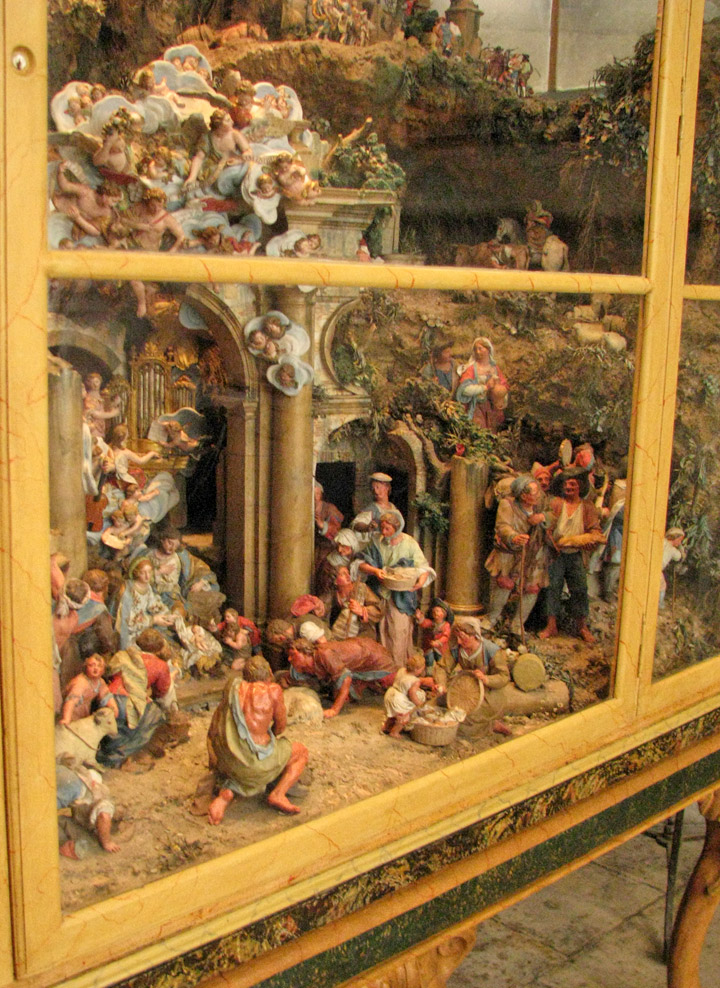
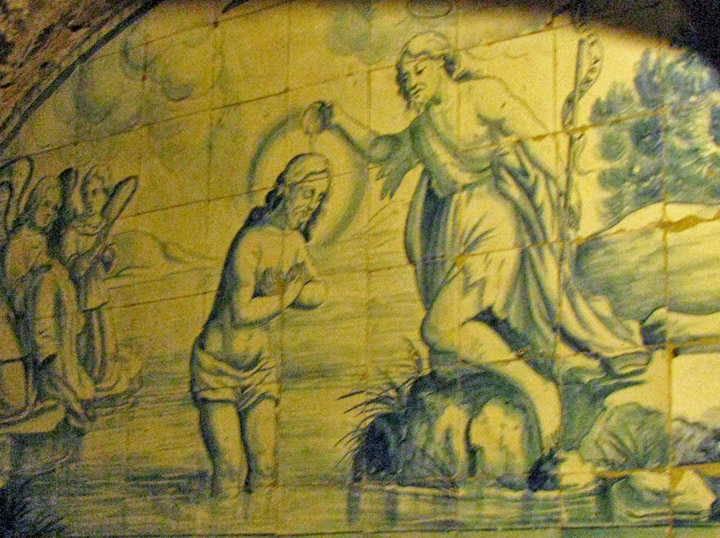
baptism of Jesus

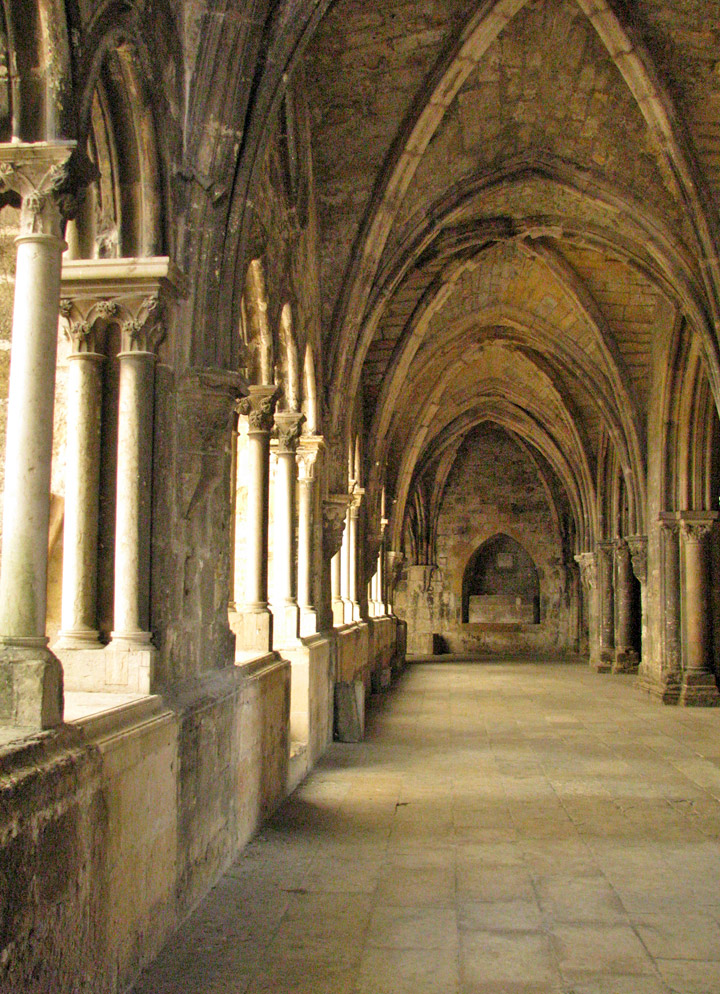
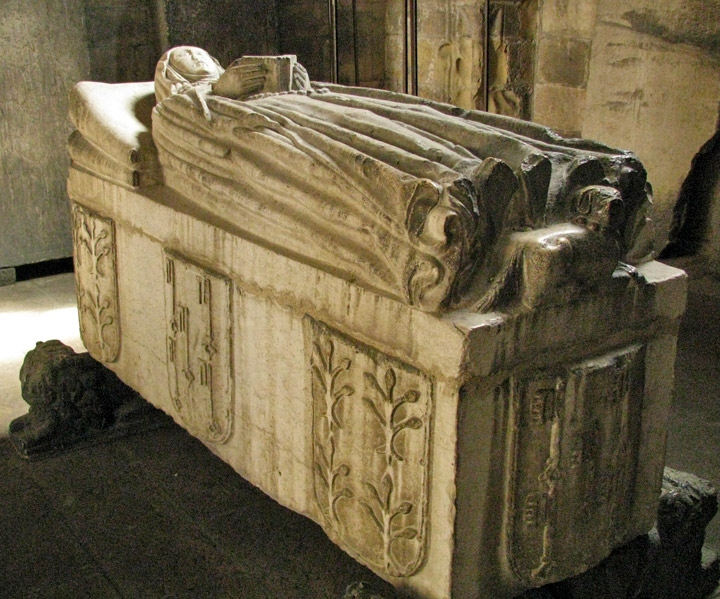
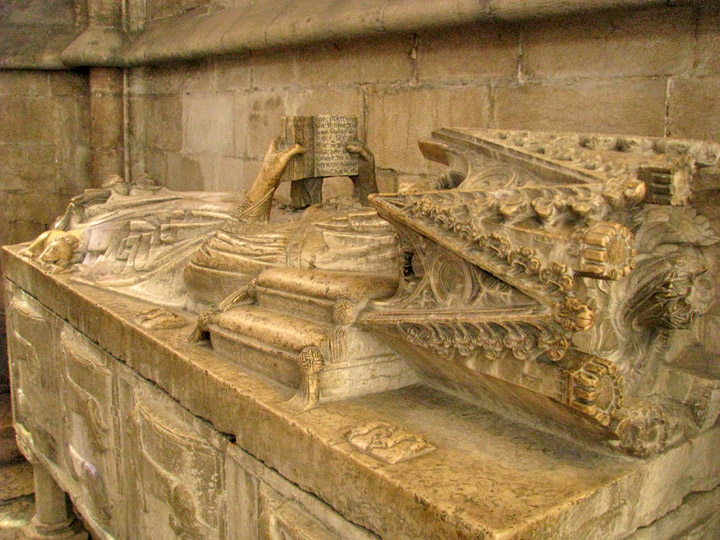
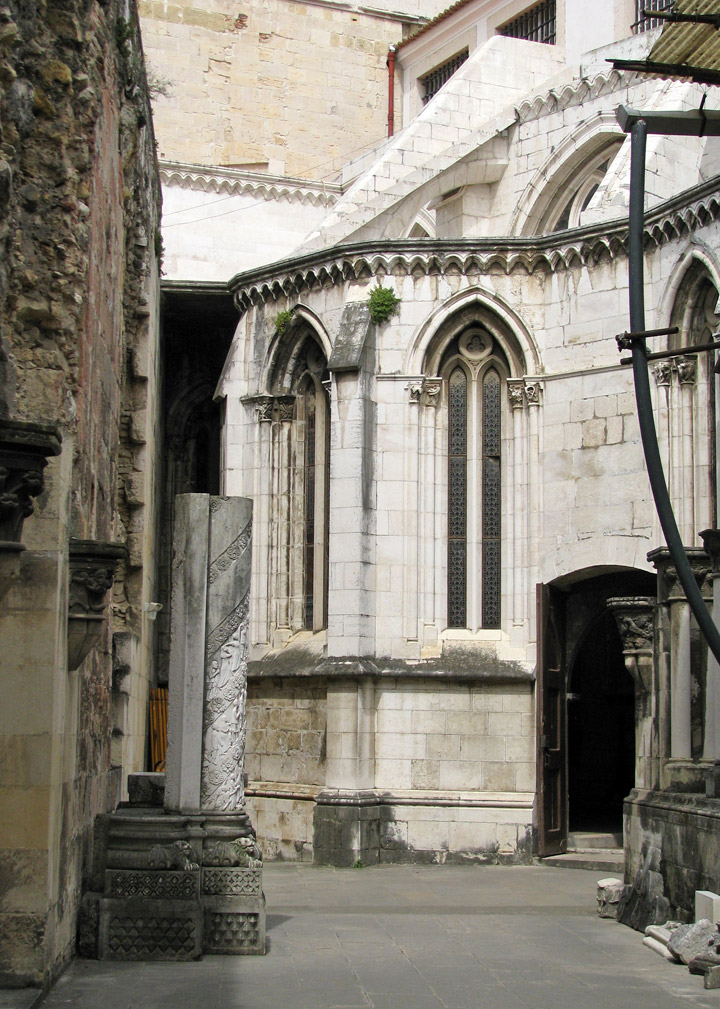
side chapel
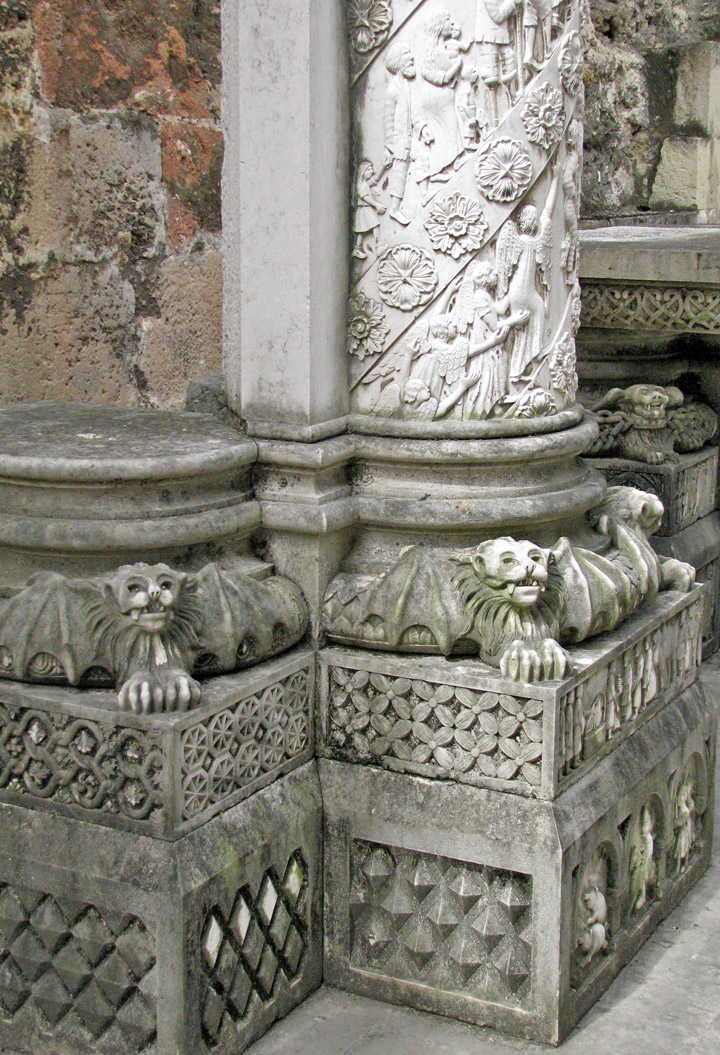
column
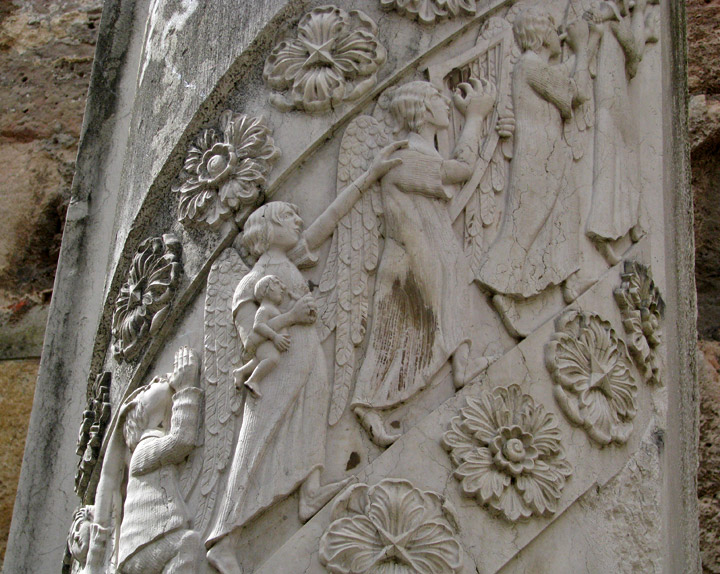
detail on the column
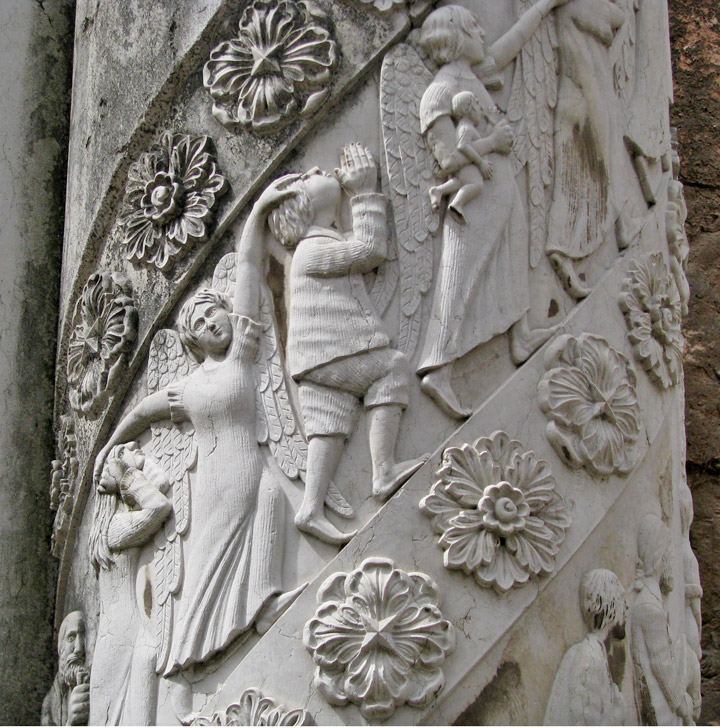
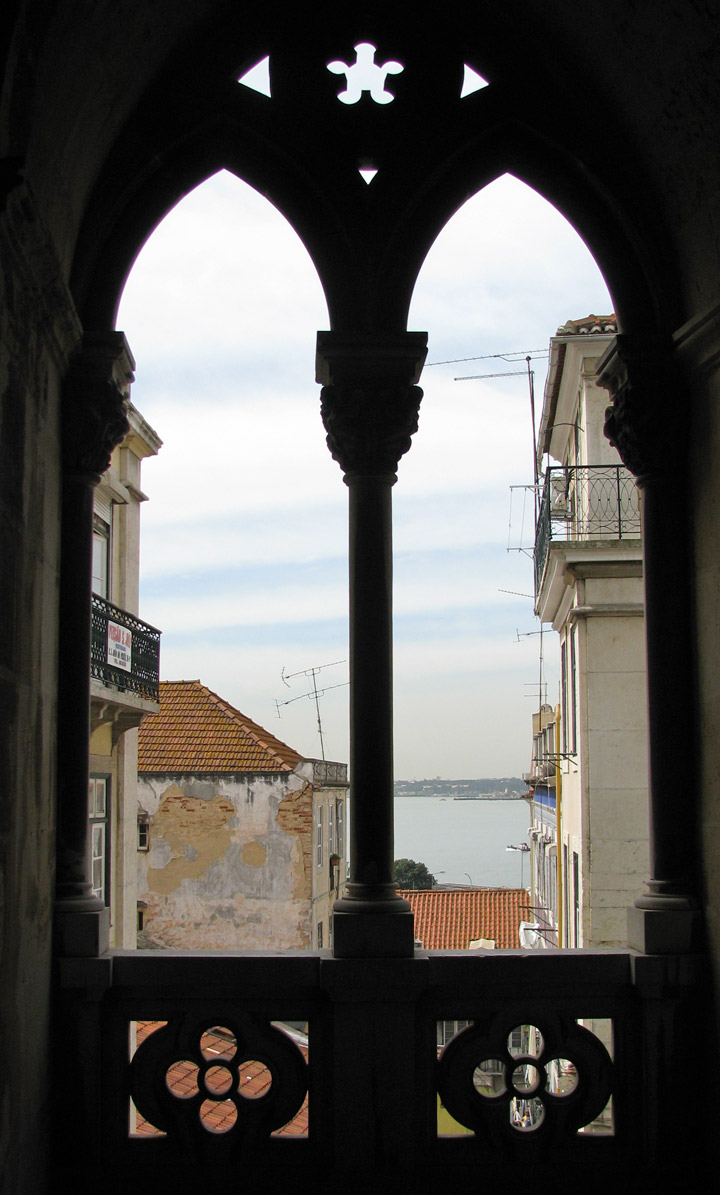
view of the Tagus river
